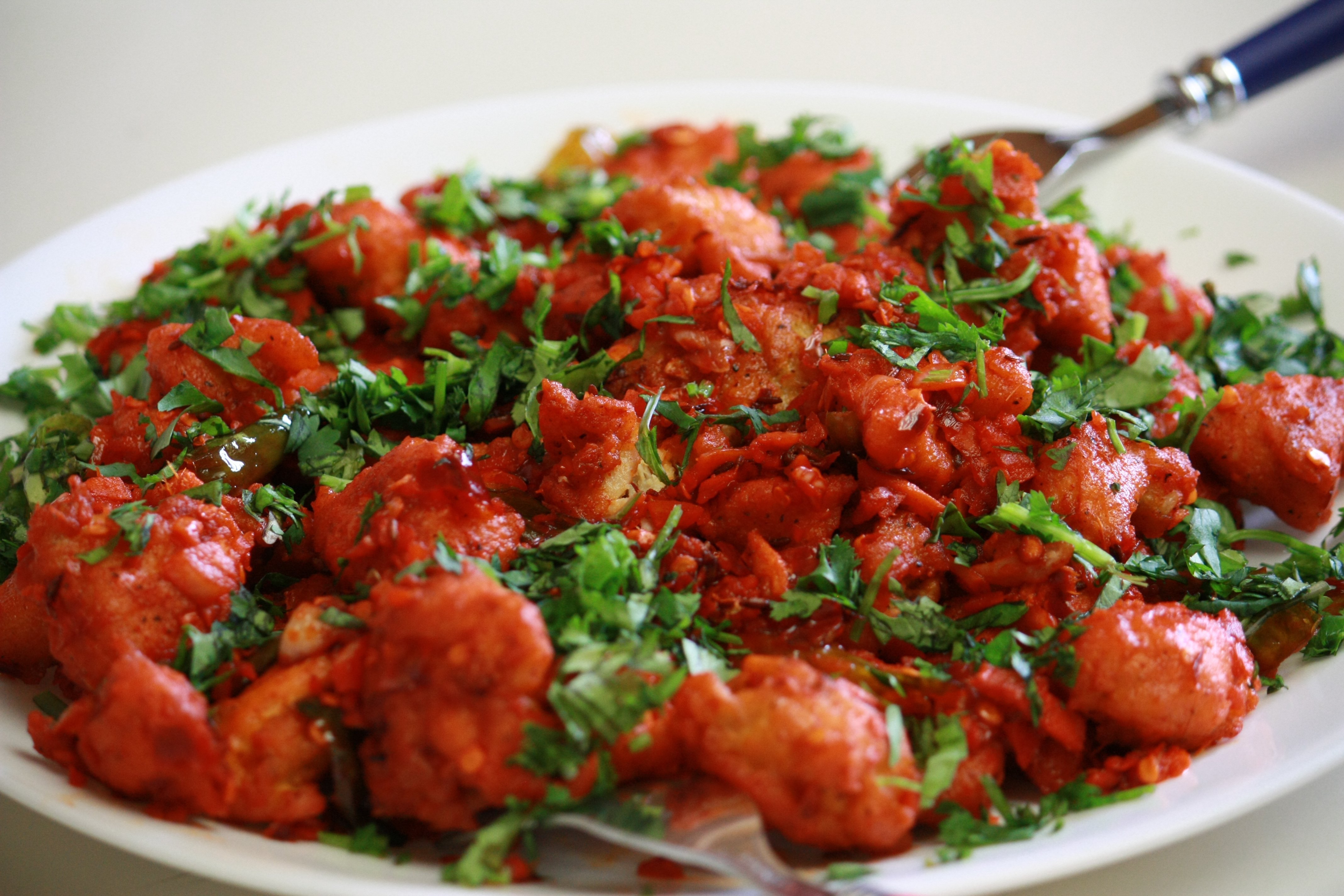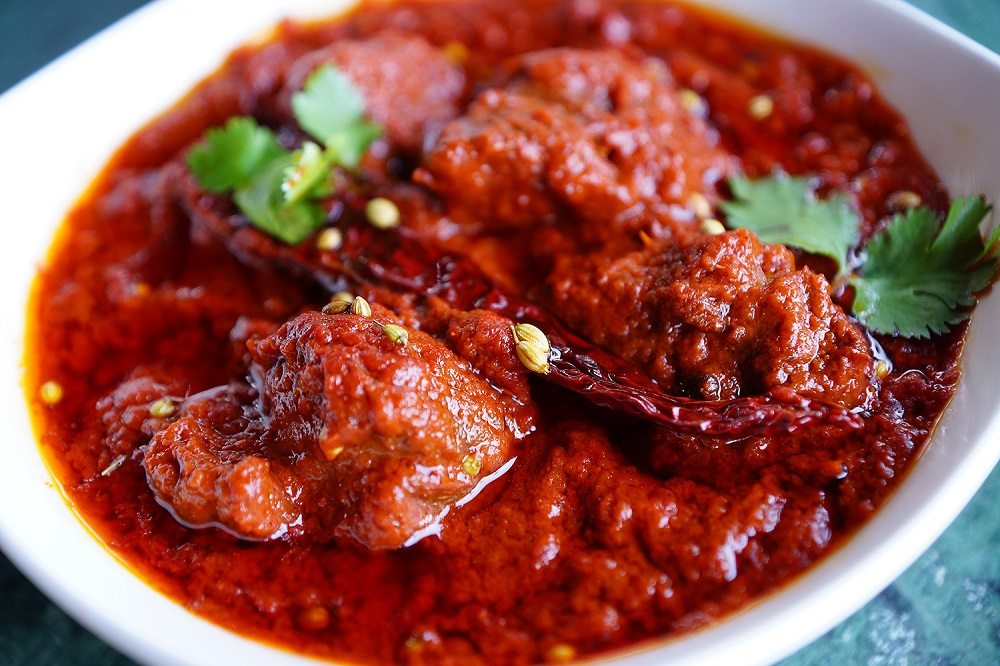Spicy Indian food tantalizes taste buds and captivates hearts, offering a vibrant culinary adventure that showcases the rich tapestry of Indian culture. From the bustling streets of Mumbai to the serene backwaters of Kerala, the diverse flavors of spicy Indian cuisine invite us to explore a world of culinary delights.
Embarking on this gastronomic journey, we will delve into the history, ingredients, cooking techniques, and cultural significance of spicy Indian food. Prepare to be enchanted by the vibrant flavors and captivating aromas that define this culinary masterpiece.
Indian Cuisine Background
Indian cuisine, a vibrant tapestry of flavors, aromas, and traditions, has a rich history dating back centuries. Its unique blend of spices, herbs, and cooking techniques has captivated palates worldwide.
The use of spices in Indian cuisine is deeply rooted in Ayurveda, the ancient Indian system of medicine. Spices were believed to possess medicinal properties, aiding digestion, boosting immunity, and balancing the body’s elements.
Regional Variations
India’s diverse geography and cultural heritage have given rise to a wide array of regional cuisines, each with its distinct flavors and spiciness levels.
- North Indian cuisineis known for its rich, creamy dishes like butter chicken and paneer tikka masala, often featuring a blend of aromatic spices such as cardamom, cinnamon, and saffron.
- South Indian cuisineis characterized by its use of coconut, tamarind, and chili peppers, resulting in tangy and spicy dishes like dosa and idli.
- East Indian cuisine, influenced by neighboring Bangladesh and Myanmar, offers a balance of flavors, with dishes like machher jhol (fish curry) and rasgulla (sweet dumplings) showcasing the region’s culinary diversity.
- West Indian cuisine, with its proximity to the Arabian Sea, incorporates coastal influences and features seafood dishes like bombil fry (Bombay duck) and sol kadhi (coconut-based drink).
Key Ingredients for Spicy Indian Food

Spicy Indian cuisine is renowned for its bold and fiery flavors, achieved through a harmonious blend of aromatic spices. These spices not only add heat but also contribute a symphony of complex flavors to the dishes.
The foundation of spicy Indian cooking lies in a diverse array of spices, each with its unique flavor profile and origin. These spices are carefully selected and combined to create a harmonious balance of heat, aroma, and depth of flavor.
Chili Peppers: The Heat-Bringers
Chili peppers are the cornerstone of spicy Indian cuisine, responsible for adding a fiery kick to many dishes. Originating from the Americas, chili peppers come in various shapes, sizes, and heat levels. The most commonly used varieties in Indian cooking include cayenne, red chili, and green chili peppers.
The capsaicin compound present in chili peppers interacts with receptors on the tongue, triggering a burning sensation known as “heat.” The heat level of a chili pepper is measured in Scoville units, with higher units indicating greater spiciness.
Popular Spicy Indian Dishes

India’s diverse culinary landscape offers a plethora of tantalizing spicy dishes that ignite taste buds and leave an unforgettable impression. These dishes, hailing from various regions across the country, showcase the vibrant flavors and aromatic spices that define Indian cuisine.
To delve deeper into this culinary adventure, we present a table highlighting some of the most popular spicy Indian dishes, their regional origins, key ingredients, and a brief description of their captivating flavor profiles.
Regional Delights
| Dish Name | Region | Key Ingredients | Flavor Profile |
|---|---|---|---|
| Vada Pav | Maharashtra | Spicy potato patty, buns, chutneys | Savory, tangy, spicy |
| Chole Bhature | Punjab | Spicy chickpea curry, fried bread | Rich, creamy, tangy |
| Dosa | South India | Crispy fermented lentil crepe, chutneys | Savory, tangy, spicy |
| Hyderabadi Biryani | Hyderabad | Fragrant rice, tender meat, spices | Aromatic, flavorful, spicy |
| Vindaloo | Goa | Pork or beef in spicy vinegar-based sauce | Tangy, spicy, flavorful |
| Rogan Josh | Kashmir | Lamb in yogurt-based gravy, spices | Rich, creamy, mildly spicy |
| Laal Maas | Rajasthan | Goat meat in red chili-based gravy | Fiery, tangy, flavorful |
| Chicken Tikka Masala | North India | Tender chicken in creamy tomato-based sauce | Creamy, tangy, slightly spicy |
Cooking Techniques for Spicy Indian Food
Indian cuisine employs a diverse array of cooking techniques to achieve varying degrees of spiciness in its dishes. These techniques include tempering, roasting, and slow cooking, each contributing to the distinctive flavor profiles of Indian food.
Tempering
Tempering is a technique where whole spices, such as cumin, mustard seeds, or fenugreek, are heated in oil until they crackle and release their aromatic compounds. This process enhances the flavor and aroma of the spices, creating a base for the dish.
Roasting
Roasting spices, such as coriander seeds, cumin, or chili peppers, intensifies their flavor and reduces their bitterness. Roasting brings out the natural oils and aromas of the spices, making them more potent and adding depth to the dish.
Slow Cooking
Slow cooking allows spices to infuse their flavors into the dish gradually over a longer period. This technique is often used in curries and stews, where the spices have ample time to release their flavors and blend harmoniously with the other ingredients.
Health Benefits and Considerations
:max_bytes(150000):strip_icc()/spicy-chicken-curry-FT-RECIPE0321-58f84fdf7b484e7f86894203eb7834e7.jpg)
Spicy Indian food is not just flavorful but also potentially beneficial for health. Its ingredients are rich in antioxidants, which can help protect cells from damage caused by free radicals. Additionally, certain spices used in Indian cuisine, such as turmeric and ginger, have anti-inflammatory properties.
Moderation is Key
While spicy Indian food can offer health benefits, excessive consumption can lead to digestive issues such as heartburn and indigestion. Individuals with sensitive stomachs or certain health conditions should consult with a healthcare professional before incorporating large amounts of spicy food into their diet.
Moderation is key to enjoying the health benefits without experiencing adverse effects.
Cultural Significance of Spicy Indian Food
Spicy Indian cuisine is deeply intertwined with the cultural fabric of India. Its flavors and aromas have shaped social customs, religious rituals, and family traditions for centuries.
Religious Significance
Spicy food holds a special place in Indian religious practices. Many Hindu festivals, such as Diwali and Holi, feature dishes that are intentionally made spicy to honor deities and celebrate the occasion. In some regions, it is believed that spicy food purifies the body and mind, making it an essential part of religious ceremonies.
Social Gatherings
In Indian society, spicy food is a symbol of hospitality and warmth. When guests visit a home, they are often welcomed with a spread of spicy dishes. Sharing these meals fosters a sense of community and strengthens bonds between family and friends.
Spicy food also plays a role in weddings, birthdays, and other social celebrations, where it adds a festive touch to the occasion.
Emotional and Sensory Connections
Spicy Indian cuisine evokes strong emotional and sensory experiences for many Indians. The intense flavors and aromas stimulate the senses, creating a sense of pleasure and satisfaction. For some, spicy food is associated with childhood memories and the comfort of home.
For others, it represents a sense of cultural identity and pride.
Modern Interpretations of Spicy Indian Food
In the realm of culinary innovation, modern interpretations of spicy Indian food are pushing the boundaries of traditional flavors. Chefs are experimenting with fusion dishes and novel spice combinations, redefining the very essence of Indian cuisine while preserving its fiery spirit.
Fusion Dishes
- Indian-Mexican Fusion:Tacos and burritos infused with Indian spices like cumin, coriander, and chili peppers, creating a tantalizing blend of flavors.
- Indian-Italian Fusion:Pizzas topped with spicy curries, tandoori chicken, and fresh herbs, offering a unique twist on Italian classics.
- Indian-Thai Fusion:Curries infused with lemongrass, kaffir lime leaves, and chili peppers, creating a harmonious balance of heat and aromatic flavors.
Experimental Spice Combinations, Spicy indian food
- Smoked Spices:Smoked paprika, chipotle powder, and smoked cumin add a rich, earthy depth to spicy dishes.
- Floral Spices:Rose petals, saffron, and star anise introduce delicate floral notes that balance the heat and add complexity.
- Citrusy Spices:Kaffir lime leaves, lemon zest, and orange peel provide a refreshing acidity that cuts through the spiciness.
Essential Questionnaire
What are the key ingredients used in spicy Indian food?
Spicy Indian dishes rely on a symphony of spices, including chili peppers, turmeric, cumin, coriander, and garam masala, each contributing unique flavors and aromas.
How does the level of spiciness vary across different regions of India?
The spiciness of Indian food varies significantly by region, with dishes from the southern states of Andhra Pradesh and Tamil Nadu known for their intense heat, while northern regions like Punjab and Kashmir offer milder options.
What are some popular spicy Indian dishes?
From the fiery Vindaloo to the aromatic Biryani, India boasts a vast array of spicy dishes. Other notable mentions include Chicken Tikka Masala, Rogan Josh, and Pani Puri.
Are there any health benefits associated with eating spicy Indian food?
Consuming spicy Indian food in moderation may offer certain health benefits, such as reducing inflammation, boosting metabolism, and providing antioxidants.
